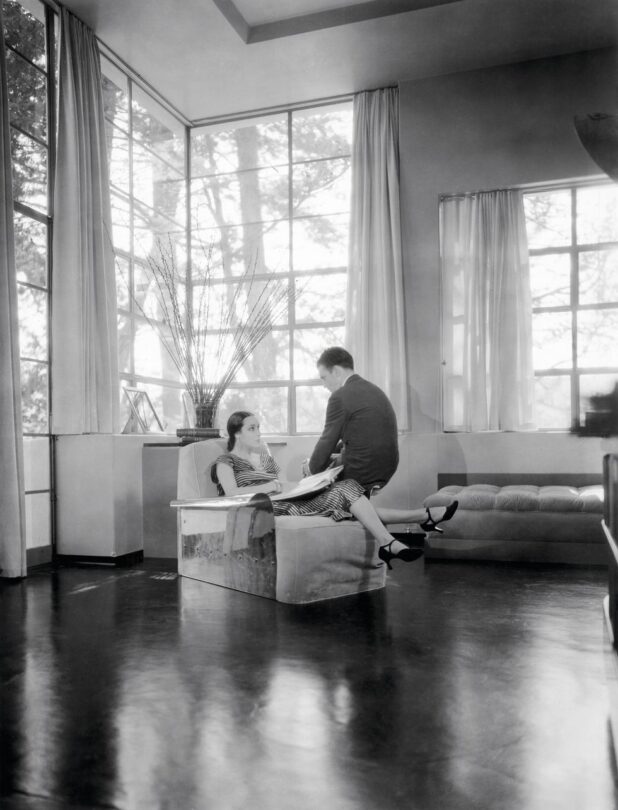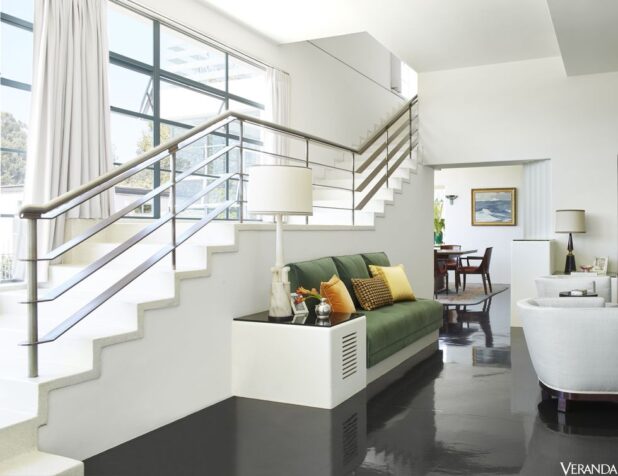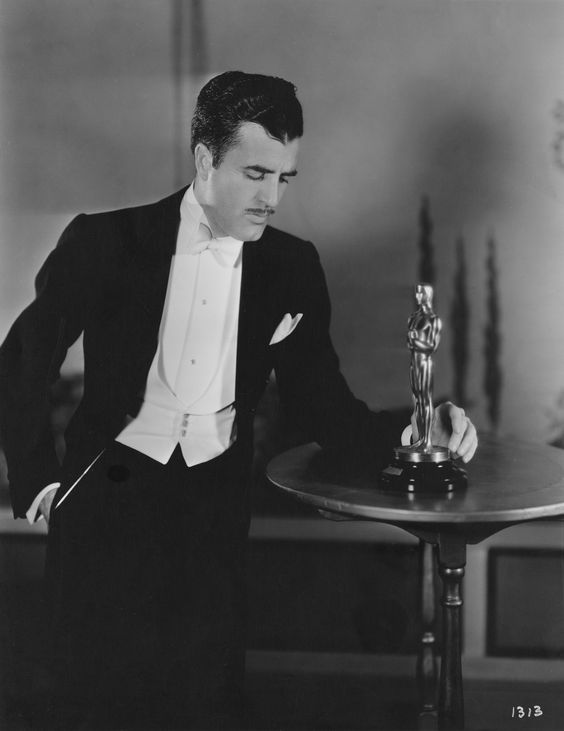Oscar’s a Dub! – Patrick Ryan takes a look at our capital’s close link to the Academy Award
The eyes of the world will be on the Dolby Theatre on March 11th when the 96th Academy Awards are presented in LA but we’ll wake up Monday morning wearing a collective smile of smug satisfaction confident in the knowledge that auld Oscar is still as Irish as a Tayto sandwich.
Born to Dubliner Austin Gibbons and his wife Veronica, on March 23rd, 1893, facts about Cedric Gibbons’ early life are hard to tie down and though some claim he was born in Brooklyn the man destined to design the Academy Award was quick to proudly claim our capital as his birthplace and in the US Census listed “Irish Free State” as his place of origin.
Privately educated by tutors Cedric toured Europe as a young man before joining his father’s architecture practice, though his poor maths scores presented a problem so instead he studied to painting and sculpture at New York City’s Art Students’ League. The Big Apple was then the centre of the burgeoning motion picture business and Cedric first worked under sculptor Hugo Ballin, putting his skills to work at the nearby Edison Studios on production design/art direction in 1914, before accepting a contract from Sam Goldwyn, who would later found MGM
Rumours remain that it was Cedric who introduced his boss to Cairbre, the roaring lion used in MGM’s opening credits, who was born at Dublin Zoo. It it’s not true it should be because Cedric was certainly a visionary, replacing early simple painted backdrops with realistic 3-D sets, and was equally clever in negotiating clauses in every contract entitling him to sole credit as art director and production designer on all films he worked on, racking up a record 1,500 mentions on celluloid.
Demands for union recognition, compounded by whispers of lurid sex scandals, drug-taking and general debauchery were starting to threaten profit margins and prompted a worried Louis B Mayer to propose the setting-up of the “Academy of Motion Pictures Arts and Sciences” (AMPAS) in March 1927 to protect the studios, with Gibbons a founding member.
It total 230 members were listed under five headings: Producers, Actors, Directors, Writers and Technicians but behind the glitz and glamour Hollywood was like today, seedy and sordid. As Cedric’s pal the actor David Niven commented it was “hardly a nursery for intellectuals, it was a hotbed of false values, it harboured an unattractive percentage of small-time crooks and con artists”.

AMPAS soon decided that annual awards could help promote the movies and those who worked on them and “Gibby” as he was known to friends like Niven, Gary Cooper and Greta Garbo, was tasked with designing the new trophy. He made his initial sketches on a table-cloth at an industry banquet and it’s suggested that his final design of a crusader holding an upturned sword, standing on a film reel was based on Emilio Fernandez, a Mexican filmmaker and actor, the reluctant model talked into posing naked for the project by Cedric’s wife, the beautiful Mexican actress Delores Del Rio.
These detailed drawings and notes were passed to George Stanley who was paid a flat fee of $500 for sculpting the prototype.
The first Academy Awards was a private dinner for 270 insiders at the Blossom Room of the Hollywood Roosevelt Hotel on Thursday, May 16, 1929 and cost $5 per ticket to attend. Copies of Gibbons’ new 13.5 inch tall statuette in gold-covered bronze, nicknamed the “Iron Man”, were presented to 12 people in just 15 minutes – a huge contrast to the estimated $58m the 2024 event will cost.
Credit for Oscar’s name is clamed by several people but it usually goes to the Academy’s librarian Margaret Herrick who reportedly joked that the trophy looked just like her Uncle Oscar. The father of the Oscar was nominated for the trophy no less than 37 times, with Gibbons taking home a record 11 awards, though he was unsuccessful in probably his most famous film The Wizard of Oz, with the 1939 gong going to art director Lyle Wheeler for Gone With The Wind.
Cedric Gibbons was by then a cultural colossus, the father of art direction, a man who having rubbed shoulders with legendary architects like Le Corbusier at the 1925 Exhibition of Modern Decorative and Industrial Arts in Paris boldly introduced shiny black-and-white sets to musicals and popularised American art moderne (streamline moderne) which emphasized vertical lines in contrast to the horizontal but near-identical French art deco) inventing MGM’s “metro style”, his genius recognized by the National College of Art and Design in Dublin 8 during a conference in 2018.
The first movie with an art moderne set, Our Dancing Daughters made a star of Joan Crawford in 1928 and department stores were inundated with customers’ demands for Gibbons’ features like venetian blinds, figurines and indirect lighting for their own homes, as well as copies of Crawford’s dress for their wardrobes.
“Motion pictures set the vogue in wearing apparel styles,” the innovative Dubliner had predicted to the LA Times six months earlier.
“Fashions always find their way to the screen before they strike Fifth Avenue. So it is with architectural and decorative styles. The screen designer must search them out and be the first to use them,”

Despite his style Gibbons was also widely respected for not wasting moviemakers’ money and for Ben Hur he saved MGM $100,000 ($2.4m now) by painting half the Roman Coliseum on glass, in miniature. Off set much of his own life mirrored what he presented to moviegoers and little expense was spared on the the immaculate 4,744-square-foot Streamline Moderne-Bauhaus house he helped design, and shared with Delores Del Rio in the Santa Monica Hills, recognized since 2913 as a Historico-Cultural Monument by LA City Council, which itself has featured in recent Hollywood movies.
“He would arrive in his Dusenberg, in the grey Homburg hat and the grey gloves, and he would walk up the stairs to the art department . . . walk in and say good morning to his secretary,” recalled designer Herbert Ryman, “with all of us in the art department watching him appear and disappear with this elegant procedure.”
Though a shy figure Gibby was known in MGM for a fanatical attention to detail, taking personal control on all visual aspects of the 40 to 50 movies MGM produced every year – down to the buttons used on costumes – with military-like precision.
“Cedric Gibbons was the grand cardinal of the art department,” director Vincente Minnelli mused.
“Cedric Gibbons was the grand cardinal of the art department,” director Vincente Minnelli mused.
By his retirement in 1956 Hollywood’s Golden Era held little more than glowing embers of it’s former glory as MGM recorded it’s first loss-making year. Cedric Gibbons passed away in LA in 1960, his grave marked by a modest headstone but his true memorial is found in his movies, through design classics he helped popularise, and most of all in the mystique surrounding the streamlined form of Oscar who has remained unchanged for almost 100 years.









